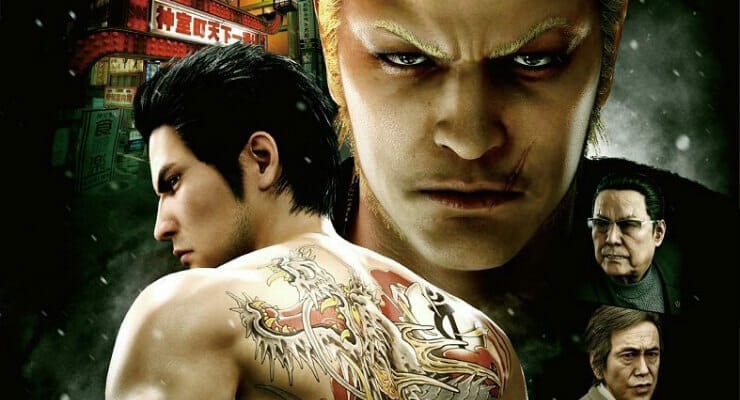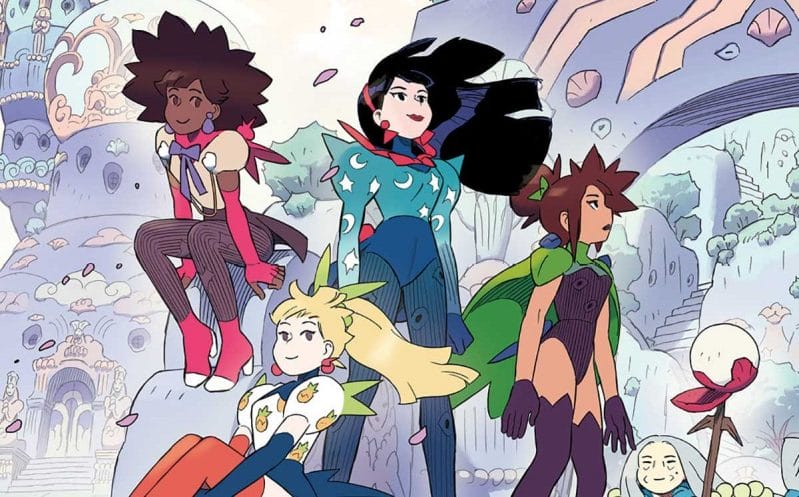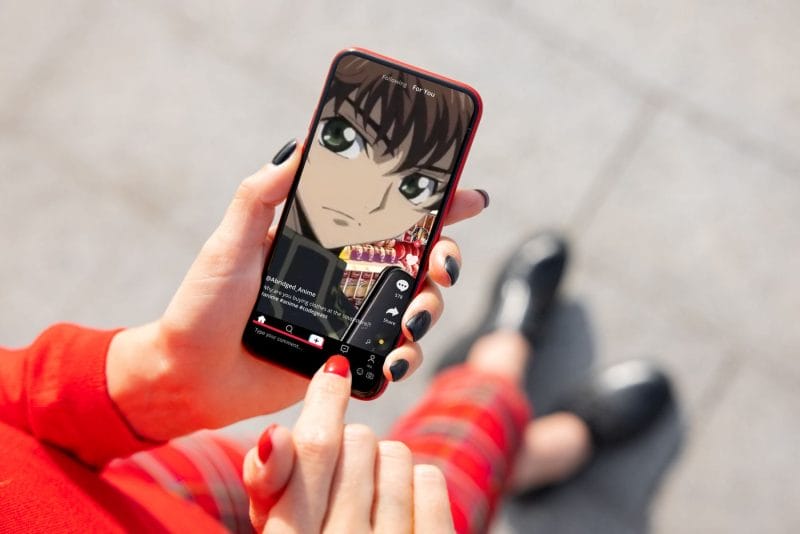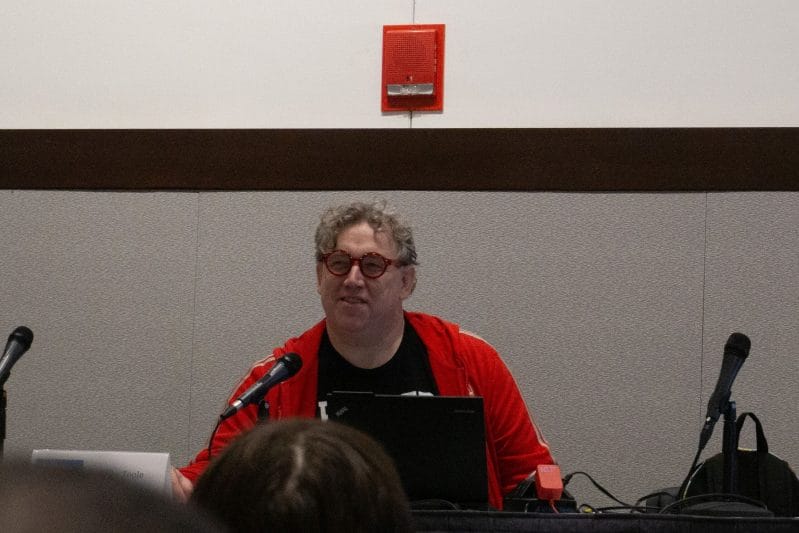This is the second part of a two-part series. You can read the first article, which looks at Grand Theft Auto V and Akiba’s Trip here.
Disclaimer: This article contains spoilers for Sleeping Dogs and the Yakuza game series.
Now that we’ve examined the chaotic playgrounds that are Grand Theft Auto and Akiba’s Trip, it’s only apt to look at a pair of games that place value on some manner of order. This time, I’ll be comparing Sleeping Dogs, a 2006 title from Canadian studios United Front Games and Square Enix, and Sega’s cult-classic Yakuza series. When compared to the titles in the first installment, Yakuza and Sleeping Dogs are more similar on the surface. The western press agreed, to the point that outlets made direct comparisons between the two when Sleeping Dogs first released in 2012. It’s fitting, not just because both titles are focused on the world of Eastern crime syndicates, but also because both value existing within the setting over controlling it, and use their worlds to explore narrative themes of identity and defining one’s true self.
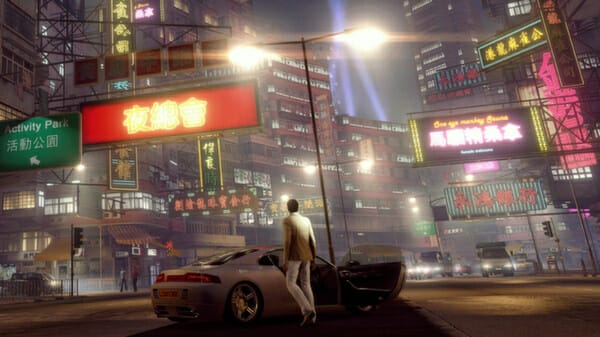
Sleeping Dogs is interesting in its own right, because it’s a spiritual successor to the True Crime games on the PlayStation 2. The title was originally meant to be the third game in that series before Activision pulled the plug on the project. Ultimately, the True Crime franchise, Sleeping Dogs included, aimed to create a more cynical and realistic take on Grand Theft Auto’s established formula. As a result, the games keep the same basic city sandbox, though many of the more freeform elements were downplayed in favor of more structured challenges. In the case of Sleeping Dogs, lead character Wei Shen also works as an undercover cop for the Hong Kong Police Department, who’s tasked with infiltrating a Chinese triad. This forms the groundwork for the game’s core mechanics, in which the player is graded on missions in two categories. Players earn “Triad” experience for being creatively violent and chaotic, but at the same time, they risk losing “Cop” experience for sloppiness or endangering public property and civilians. Thus, while players can experiment in the sandbox map like one would in Grand Theft Auto, there’s less incentive in the game itself to do so. This is emphasized by the fact that most NPCs in the world aren’t aggressive.

Yakuza follows a slightly different formula, having been created with the goal of making a game for adults that wasn’t like anything else on the market. In particular, the series was partly inspired by the life sim aspects of Shenmue, Sega’s previous urban RPG. As a result, Yakuza tends to feature far smaller areas to roam, and players are heavily restricted as to what they can do to within the game world. At the same time, though, there is a far greater variety of things to do in said world beyond the core mechanical challenges. For example, while both Yakuza and Sleeping Dogs feature a karaoke mini-game, the former also includes an entire mahjong sub-game that could be a full game in its own right. That’s to say nothing of Yakuza’s fishing minigames, Yakuza 4’s casinos, or Yakuza 0‘s incredibly involved slot car racing sim. There’s also a massive list of wacky side stories in each Yakuza game, where players get the chance to help out random people in the neighborhood.

Where Sleeping Dogs’ Victoria Harbor mostly exists as the backdrop for Wei Shen’s story, Kamurocho, Sotenbori, and other places visited in Yakuza feel like characters in themselves, with countless stories and events that have nothing to do with the main cast. RGG Studio, the team behind the Yakuza franchise, even made the 2019 game Judgment, a story set in Kamurocho with a completely different cast of characters from a different side of the law. Their world building was strong enough to allow a completely different game to exist within it without needing familiar Yakuza characters to be compelling.

While Sleeping Dogs is Canadian made, it takes inspiration from both Hong Kong and American crime thrillers. As a result, there’s a definite theme of individualism that crops up in its narrative. This time around, though, the idea is used to push the idea of Wei Shen as the core of the game and story. The Hong Kong metropolis, meanwhile, is used mainly as a stage for his personal tale. It’s not surprising that the sandbox elements remained with this framing.
The Japanese value of unity informs Yakuza‘s world design, as the goal of all the team’s decisions is to make players like as if they are a part of a world and community, seeing the challenges others face and offering to help out where they can. Most distractions players find aren’t intended to test their combat skills or unlock new mechanics. Instead, they’re just mundane things done at their leisure that normal people do all the time. On occasion, other characters start side stories in the context of these distractions, which just adds to the “community” feel as players are introduced to all sorts of fellow enthusiasts and rivals.

Stripping away these superficial elements, though, presents a more intriguing difference between the two titles, which serve as a window into life within oppressive conformist cultures. Sleeping Dogs follows the True Crime legacy by making a story in which the world crashes down on the lead. Specifically, Sleeping Dogs focuses on Wei Shen’s indecision on whether he belongs with the police or with the Triads. His decisions are complicated by a quest for revenge against a number of Triads who led to his sister’s death. He’s in the midst of an existential crisis, and his story plays out like a tragedy, with a lot of people dying as a result of his actions and his inability to find a moral line. The game ends on a sobering note, as Wei is left in a confused place, with no real friends and no real enemies left, and no world that will really accept him anymore. The game asks where a person belongs in a society that demands that everyone fit into a mold if they simply can’t, and the player is left to ponder that.

Yakuza shares a similar story setup, where franchise lead Kazuma Kiryu exists between the life of a normal civilian and one among the feared Tojo yakuza clan. Unlike Sleeping Dogs, the Yakuza series is fueled by Japanese crime dramas and real-world mythology surrounding the actual yakuza. As a result, the games paint this ideal of strong-willed people who come together to help Japan. It’s false, obviously, but Kiryu is meant to represent this ideal of the perfect yakuza. All of Kiryu’s adventures force him to face the harsh reality and stand up for that ideal he believes in, with every villain being a dark reflection of an aspect of himself. Unlike Wei Shen, Kiryu was able to bow out of the series on a peaceful note with Yakuza 6. While he stands in a changing world and with many of his friends missing or fallen, he does so with a family and a sense that he proved his path in life to be true.

Wei Shen is a tragic protagonist, a summation of western cynicism at the ideal of individualism. Unlike Grand Theft Auto, masculine posturing is ripped away by the end of Sleeping Dogs to show the emptiness it truly provides. It highlights the confused nature of modern society, and the struggles of those trying to be themselves within it. Wei’s lack of understanding who he really is just adds to this desolate worldview.

Kiryu, on the other hand, is a very macho sort of fantasy that slots into the Japanese ideal of community in an interesting way. He’s a mixture of conformity and individuality: practically superhuman, though he chooses to do what he sees as right for those he shares this world with, and to prove his ideals as meaningful. Kiryu knows who he wants to be and works for it, earning a victory and a sense of peace by the end of his story.
Western crime media tends to look at the world and see questions that need to be answered, though none is usually provided. It looks at the problems of the real world, though it’s unsure of how we got here and how we escape these cycles of violence.
Japanese crime media, meanwhile, is an inverse that paints the world into a sort of “shonen hero” mindset. Media sees determination and belief in one’s own values as the key to freeing a person from the crushing systems of an oppressive culture. It’s far more fantastical in this sense, and resonates in a different way that makes others want to stand up for what they believe in.
These are broad statements, of course. The truth is far more complicated, but I this should offer a solid foundation to further examine differences in western and Japanese game design. Doubly so when considering that this series focused primarily on games targeted at male audiences. It’s fun to think about how history and stories from one culture to another can help to create such wildly different art, and it’s a good place to begin looking for ways to understand what makes us similar as human beings, and what shared cultural values divide us in unexpected ways.


